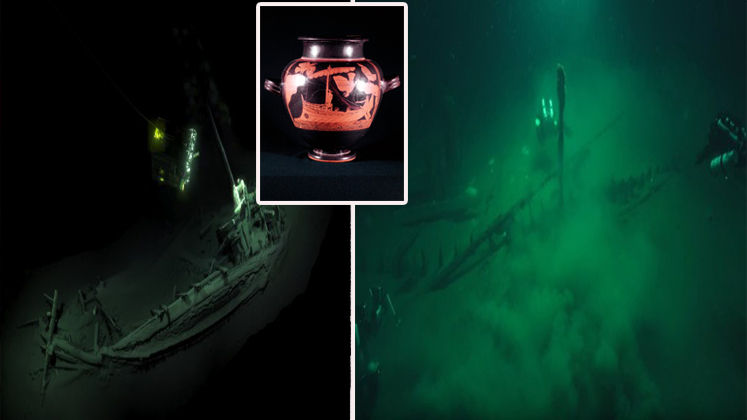This small, mysterious symbol carved in stone across continents puzzles archaeologists and historians. These identical handbag-like shapes appear in ancient Sumer, held by figures considered civilization-bringers. Found at sites from Göbekli Tepe in Turkey to Assyrian palaces, Mesoamerican temples, and Māori legends, the motif recurs persistently. The handbag carvings, a boxy pouch with a curved handle, are etched, painted, and woven into cultures separated by time and distance. What explains their global presence? Are they common objects or something deeper? Scholars propose theories ranging from ritual containers to cosmic symbols. Today, we explore the ancient handbag’s story, uncovering mysteries that span history and geography.

Göbekli Tepe, located in southeastern Turkey, is one of the oldest known human-made temple complexes, dating back over 13,000 years. Its massive T-shaped pillars are adorned with carvings of animals, snakes, and strange human-like figures. Among these intricate designs, a subtle detail stands out: groups of small, handbag-shaped symbols carved side by side on several pillars. These simple shapes—a boxy base topped with a curved handle—are striking in their repetition. Unlike the dominant images of wildlife and gods, these pouches are modest, almost hidden, yet persistent. What could such a humble icon mean in such a monumental place?
The builders of Göbekli Tepe were likely hunter-gatherers who had not yet developed farming, yet they created a site that challenges our understanding of prehistoric humans’ symbolic capacities. The handbag shapes likely held significance beyond everyday use. Positioned alongside animals like boars and vultures, they suggest a role in a larger spiritual or ritual narrative, possibly as containers for sacred objects, tokens of status, or symbolic vessels of unseen power. These carvings invite us to reconsider the depth and complexity of ancient symbolic language, far earlier than previously imagined.
Assyria’s Sacred Reliefs: The Ritual Bag and Its Meaning
Thousands of years after Göbekli Tepe, in ancient Assyria, elaborate stone reliefs in palaces like those in Nineveh depict winged figures, often called genies, holding two distinct objects: a small bucket and a pointed cone. These objects strongly resemble the handbag shapes carved millennia earlier, now clearly ritualistic tools. The cone, possibly a pine cone or the male flower of the date palm, was used by ancient farmers to dust pollen over crops. The bucket, made of leather, metal, or woven material, likely contained holy water or pollen. Together, the genies dipped the cone into the bucket and sprinkled its contents over people, trees, or objects in purification ceremonies.
These rituals were not merely practical but held deep symbolic significance tied to fertility, cleansing, and divine favor. Sprinkling pollen or holy water represented spiritual purification and the promotion of life and growth. The handbag-like containers evolved from everyday vessels into powerful emblems of cosmic and agricultural renewal. Their recurring presence in throne rooms and temples underscores their importance, showing how a simple shape became a profound religious symbol, intertwining the physical and spiritual worlds through ritual.
The Handbag in Mesoamerica: Shared Symbol or Coincidence?
Far from the ancient Near East, in the tropical jungles of southern Mexico, early civilizations like the Olmec and Maya left behind impressive stone carvings and monumental architecture. Among their artworks, human figures are depicted holding pouch-like objects closely resembling the handbag shapes of Assyria and Göbekli Tepe. Dating from roughly 1200 to 400 BC, these figures stride forward with a small, boxy bag dangling from one hand. The similarity is remarkable, especially since no known contact or cultural exchange existed between these distant peoples.
Could these unrelated civilizations have independently created the same symbol, or does it carry a deeper, perhaps universal meaning? In Olmec and Maya cultures, art was often infused with spiritual significance, linking objects to myth and power. The handbag might have been a practical container, a symbol of status, or a ritual item, such as a sacred vessel or token of authority. Its widespread appearance suggests it was more than an everyday object, possibly carrying profound symbolic weight that transcended geography and time. Whether a coincidence or a lost thread of ancient knowledge, the handbag’s persistence continues to puzzle historians and fuels its enigmatic allure.
Māori Legends and the Three Baskets: Symbolism Beyond Stone
In the distant islands of New Zealand, the rich oral traditions of the Māori tell of a hero who ventured into the realm of the gods and returned with three baskets filled with sacred knowledge. These baskets contained instructions for planting crops, reading the stars, and building canoes—skills essential for survival and prosperity. Remarkably, the shapes of these baskets, whether carved in wood or woven in flax, resemble the pouch-like handbag symbols found thousands of miles away at Göbekli Tepe. Unlike static stone carvings, the Māori baskets live within stories passed down through generations, embodying the transmission of divine wisdom and practical knowledge.
The similarity across these disparate cultures suggests the pouch shape may represent a universal symbol of knowledge, wisdom, and the connection between the earthly and divine. These baskets were vessels not just for physical items but for intangible gifts—ideas, teachings, and cultural heritage. This archetype of a container carrying sacred knowledge reflects a deep human impulse to symbolize the holding and sharing of life’s most valuable treasures. The Māori tradition expands our understanding of the handbag motif, showing how it could carry layered meanings far beyond its simple form.
Egyptian Hieroglyphs: Bag, Altar, or Tent?
In ancient Egypt, where writing was an art form, hieroglyphs conveyed meaning through detailed images. Among them is a symbol strikingly similar to a small handbag with a curved handle, often translated as a bag or altar offering. This glyph frequently appears next to pharaohs’ names or within cartouches on temple walls, sometimes hanging from a priest’s belt, suggesting it held sacred items like incense or ritual tools. However, some scholars propose it represents more than a pouch—possibly a miniature tent or portable shrine. The curved top might mimic tent poles, with the flat base representing draped cloth or skins, akin to nomadic dwellings like North American tepees or Central Asian yurts.
This interpretation transforms the handbag glyph into a powerful symbol of a portable sacred space carried by priests. The ambiguity adds to the motif’s mystery, showing how one shape could embody both the practical and spiritual, the everyday and extraordinary, in Egyptian culture. It highlights the layered meanings of symbols and their evolution across time and place.
Theories of Meaning: Ritual, Magic, and the Sacred Vessel
The handbag carvings across ancient cultures have inspired numerous theories about their significance. One idea suggests they were containers for healing powders, magical dust, or mind-altering herbs used in rituals. In Assyria, the bucket-and-cone duo was likely used in purification ceremonies, sprinkling holy water or pollen to cleanse and bless, symbolizing fertility and renewal vital to agrarian societies. In Mesoamerica, similar pouches might have been ritual containers or emblems of authority. For the Māori, baskets symbolized divine wisdom, transforming their people’s lives.
These interpretations show how the handbag transcended practical use, becoming a sacred vessel for intangible power, knowledge, healing, or protection. Some scholars view it as a cosmic symbol, uniting earth and sky, the material and spiritual worlds, in one image. Others see it as a sign of status or a token carried by priestly or divine figures. The motif’s repeated appearance in ritual, myth, and ceremony—rather than everyday life—suggests it was a potent symbol layered with meaning, carrying life’s mysteries as much as physical objects.
The Cosmic Symbol Theory: Union of Earth and Sky
Symbol expert Richard Scranton identified a pattern in how shapes represent ideas across ancient cultures. Round or curved shapes often symbolize the intangible—spirit, heavens, the unseen—while square or angular shapes represent the material world—earth, tools, structures. The handbag, with its semicircular top on a square base, combines these opposites into a single icon, possibly representing the union of earth and sky, the tangible and intangible. As a vessel, it holds and connects both realms.
In ancient societies, bags carried seeds, offerings, or sacred objects, making the pouch a powerful symbol of the balance between life’s visible and invisible forces. This theory explains the handbag’s independent appearance worldwide—no need for trade or travel, just a shared human experience of the sky above and earth below. The handbag becomes a universal shorthand for the world, joining earth and sky in a symbol that invites reverence and understanding.
Time Travel and Ancient Technology: Outlandish Ideas
Some controversial theories suggest the handbag carvings involve time travel or lost advanced technology. The handbags resemble modern purses or totes, items unknown thousands of years ago. Some carvings depict figures holding objects resembling cell phones, helmets, or even laptops and space suits, fueling speculation about encounters with future visitors or lost advanced civilizations. Could the handbags have been tools, devices, or containers of unknown knowledge or power, such as energy cells or ritual batteries? Some point to Mesopotamian depictions of lightning coils or electric trees, suggesting a forgotten energy network powered by these devices.
While mainstream scholars dismiss these ideas as fringe, the handbag’s recurrence across distant cultures invites reconsideration of human history. These symbols might hint at a deeper, stranger story where time blurs, technology is lost, and ancient art encodes hidden secrets. Whether fact or fantasy, these theories add thrilling layers to the handbag mystery, pushing us to explore beyond conventional limits.
Graham Hancock’s Theory: A Lost Civilization
Writer and explorer Graham Hancock challenges traditional history, proposing an advanced civilization predating known ones. He suggests the handbag symbol marks the presence of this lost culture’s knowledge-bearers, often called the “seven sages” in Mesopotamian myths. These sages, arriving after a global catastrophe, taught early humans skills like writing, law, farming, and crafts, laying civilization’s foundations. Hancock notes that many ancient tablets and carvings depict these figures holding the pouch-like handbag, symbolizing the secret knowledge and tools they carried to rebuild society.
This idea ties into global flood legends, like Noah’s ark, suggesting survivors preserved wisdom during cataclysms. If correct, the handbag is more than art—it’s a signature of ancient teachers who spread knowledge across continents. Whether accepted or not, Hancock’s theory invites deeper exploration of these carvings, imagining a richer, more complex history.
Mesopotamian Ritual Context
In Mesopotamian art, the handbag-like shape often represents a bucket and cone held by winged genies. The cone, likely a pine cone or date palm flower, was dipped into the bucket containing holy water or pollen and sprinkled in ceremonies to purify people, objects, or trees, symbolizing cleansing and fertility. These sacred instruments, far beyond ordinary containers, were vital to maintaining divine favor and social order, their presence in palaces and temples highlighting their significance. This ritual context deepens our appreciation of the handbag motif as a bridge between everyday life and spirituality.
Conclusion
These ancient handbag carvings are more than mere images—they open windows into spiritual, cultural, and possibly lost technological worlds. Whether ritual tools, cosmic icons, or signs of forgotten wisdom, they challenge our understanding. Each pouch invites us to look beyond the obvious, exploring connections across time and place. Next time you see this symbol carved in stone, remember it might hold secrets from the past. What do you think these ancient handbags represent? Share your thoughts and join the journey to unravel one of history’s most intriguing mysteries.






















